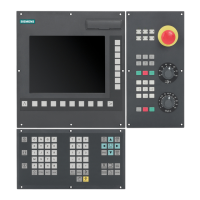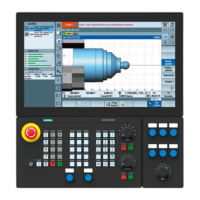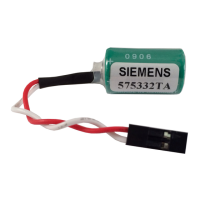Basic logic functions: Axes, coordinate systems, frames (K2)
Function Manual, 11/2006, 6FC5397-0BP10-2BA0
7
Brief description
1
1.1 Axes
Machine axes
Machine axes are the axes that actually exist on a machine tool.
Channel axes
Every geometry axis and every special axis is assigned to a channel and, therefore, a
channel axis. Geometry axes and additional axes are always traversed in "their" channel.
Geometry axes
The three geometry axes always make up a fictitious rectangular coordinate system, the
basic coordinate system (BCS).
By using FRAMES (offset, rotation, scaling, mirroring), it is possible to image geometry axes
of the workpiece coordinate system (WCS) on the BCS.
Special axes
In contrast to geometry axes, no geometrical relationship is defined between the special
axes.
Path axes
Path axes are interpolated together (all the path axes of a channel have a common path
interpolator).
All the path axes of one channel have the same acceleration phase, constant travel phase
and delay phase.
Positioning axes
Positioning axes are interpolated separately (each positioning axis has its own axis
interpolator). Each positioning axis has its own feedrate and acceleration characteristic.

